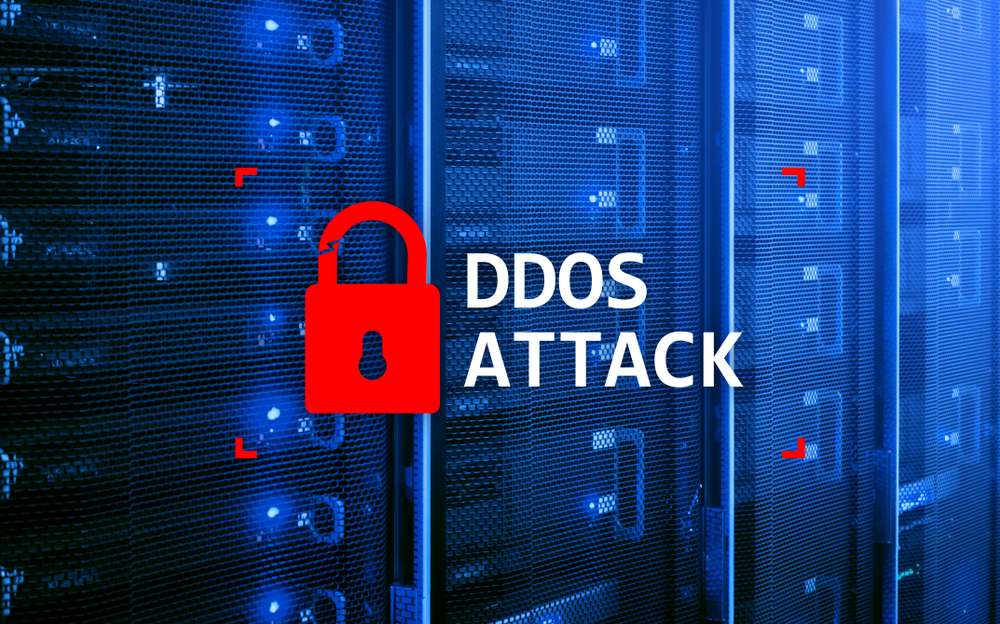When IT discussions about cybersecurity come up in the office you probably hear acronyms tossed around like baseballs at hitting practice. But don’t worry, we’re going to cover one of the most common terms—DDoS—in this piece to keep you from striking out. Distributed Denial-of-Service (DDoS) Attacks are a type of cyberattack where multiple compromised computers flood a server, website or network with massive amounts of traffic to overwhelm the system’s resources to slow it down or ultimately crash it. Read on to learn more about how to protect your business from these risks.
Estimated read time: 4 minutes

Understanding DDoS Attacks
DDoS cyber threats can disrupt your operations, impact your services and tarnish your reputation. As technology evolves, it’s crucial to stay informed about how to protect your business from these threats. Let’s explore how you can help prevent DDoS attacks and ensure your business continues to thrive.
As mentioned, a DDoS attack is a strategic attempt to overwhelm a server, service, or network with excessive internet traffic, via multiple compromised devices. This onslaught can prevent legitimate users from accessing your services, causing widespread disruption. Reasons for launching a DDoS attack vary. Some attackers are financially motivated, demanding ransom to halt the attack, while others might be ideologically driven or simply seeking thrills.
Different types of DDoS attacks, such as volumetric, protocol and application layer attacks, each have unique characteristics. Knowing these can help you prevent DDoS attacks and protect your online presence effectively.
Effective Strategies to Prevent DDoS Attacks
Securing your business against DDoS attacks starts with implementing strong network security protocols. This involves setting up secure configurations, using robust authentication methods, and protecting all network-connected devices. By creating layers of security, you can prevent DDoS attacks before they escalate.
Incorporating firewalls and Intrusion Detection Systems (IDS) is another effective strategy. Firewalls act as barriers, managing traffic based on security rules, while IDS monitors for suspicious activity, alerting you to potential threats in real-time. By combining these tools, you enhance your ability to swiftly detect and stop DDoS attacks.
Regularly updating your software is also crucial. Software updates often address vulnerabilities that could be exploited in a DDoS attack. By keeping your systems current, you enhance both performance and security, reducing the risk of disruptions.
If you serve as the IT department for your business, these procedures may fall out of your comfort zone and areas of expertise. On the other hand, you may have an IT department but depending on the size of the staff and the skill levels, you may need additional assistance. Don’t be afraid to leverage a Managed Service Provider (MSP) like Hamilton for expertise here.
DDoS Mitigation Solutions
Choosing the right DDoS mitigation services is essential in answering the question, “How do I stop a DDoS attack?” Look for an MSP that offers real-time monitoring and analytics, as these features help you quickly identify and respond to threats. Ensure the service can handle large-scale attacks and provide comprehensive network coverage.
Cloud-based DDoS protection is increasingly popular for its scalability. As your business grows, these solutions adapt to handle larger traffic volumes without compromising performance. By filtering malicious traffic before it reaches your network, cloud solutions provide an extra layer of security to maintain continuity even during an attack. It may be worthwhile to consult with a security professional for guidance on which solution fits best with your current business model.
Along those lines, make sure your DDoS solution works seamlessly with your firewall, IDS and other tools. Additionally, an experienced MSP will run regular updates and tests to confirm your defenses remain strong, helping you prevent DDoS attacks effectively. When you integrate DDoS protection into your existing security measures, you are setting your business up with a comprehensive defense strategy.
Best Practices for Ongoing DDoS Defense
Preventing DDoS attacks requires a proactive approach, including regular assessments of your security posture. If you’re someone who likes to check things off your list, this job may be better suited for an MSP to manage—depending on your budget and network environment. The task at hand requires diligence and ongoing support. You may feel more comfortable seeking input from an MSP like Hamilton to conduct regular security audits helps identify vulnerabilities, allowing you to strengthen defenses before an attack occurs.
Whether you manage this on your own or with the help of an MSP, you must maintain an incident response plan. This plan outlines procedures for handling a DDoS attack, including communication strategies and roles. A clear plan enables you and your team to respond quickly, minimizing the impact on your business operations.
In addition to an incident response plan, you must educate your employees on cybersecurity. Staff awareness continues to rank high on the list of protection strategies. Employees are often the first line of defense against cyber threats. By equipping them with the knowledge to recognize and respond to suspicious activities, you reduce your vulnerability to DDoS attacks. An MSP with a comprehensive suite of cybersecurity solutions will offer such training, including phishing scams, if you don’t have the means to do so internally.
By implementing audits, incident response planning and staff training, you create a robust defense against DDoS attacks, safeguarding your business’s integrity and ensuring continued success. When you are ready to take a proactive approach to securing your business and its most important assets, give us a call today at 308.381.1000.





